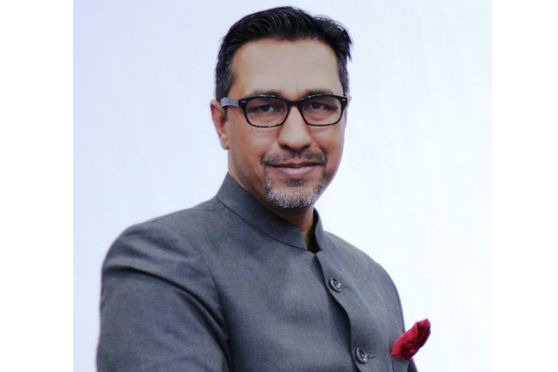There seems to be little substitute for on-campus education: Director, IIM-Rohtak


COVID-19 provided significant impetus to digitalisation as most of the educational institutions across the world shut down for a very long period of time. Several new tools, methodologies, and techniques were introduced and commercialised in the last two years. From tech-enabled classrooms with computers, audio-visual equipment, smart interactive boards, simulation based learning platforms, and online internship became common across the world of education. The New Education Policy, 2020 had already laid emphasis on strengthening education through digitisation, especially in the rural areas, that currently face issues of resource insufficiency, low student-teacher ratio, and infrastructure inadequacy.
Over the years, researchers have developed many frameworks to elucidate user’s proclivity towards technology adoption. Most widely cited and utilised model in this domain of was developed by Fred Davis in 1989 published in MIS Quarterly is Technology Acceptance Model (TAM). The model proposes that when new technology is provided to users several factors impact their choice on how and when they will utilise the new technology. However, TAM contends that there are two major factors that influence the individual acceptance of technology. One, perceived usefulness, which measures the degree to which an individual believes that the new technology will enable them to enhance their performance outcomes. Second, ease-of-use, which measures the degree to which an individual believes that using new technology will not result in additional effort. More specifically, TAM suggests that usefulness of technology coupled with easiness of use will result in greater utilisation of technology. More specifically, the technology specifications or features should demonstrate that it will result in superior performance for the user and interface with technology and using it will not be complicated.
This view is also supported by another theory called push-pull-mooring theory. In the context of online education, this theory contends that when users move to online education from campus education, the change is fundamentally a form of switching behaviour. Thus, for online education to be a primary choice researchers will now need to recognise the novel push that is needed to impel users to move to online education. Next, the research will need to identify novel pull factors that will be needed to users towards online education. Next, research must identify the mooring factors that facilitate the transition. Mooring factors are those factors that aid or impede the migration choice. Mooring factors may be an amalgamation of personal and social factors that could be both positive and negative.
In recent times, we have seen push, pull, and mooring effects on account of COVID-19. However, the effects have rather been temporary as most of the online offerings were not competent in usefulness and ease of use. Also, they were able to sufficiently identify mooring factors. Education online via video conferencing platforms offered students numerous benefits like lowered costs, ease of access, mobility, greater flexibility, and the reduced need for physical infrastructure, thereby ensuring smooth delivery of lectures given the constraints of the lockdown. However, there seems to be little substitute for the on-campus education, which offers opportunities for peer-peer learning, instructor to participant learning, and self-learning. In addition, a National Statistics Office Survey report titled ‘Household Social Consumption’ on Education’ stated that a very small percentage of rural population has access to digitals services as against a relatively large population in urban India.
Another report by the Ministry of Rural Development, Government of India revealed that nearly half of the rural schools do not have sufficient access to electricity. However, India has a very large number of mobile communication and computing device penetration. Many contend that nearly 50% of the Indian population uses smartphones. However, mobile app based education did not find very many users given that symbolic representation of mobile app based education service providers was negative. While, India’s digital divide, which is an impediment to the socially disadvantaged learners’ access to education could have been overcome by the smartphone penetration. However, users don’t find sufficiently positive mooring factors to move app based education. Overall, without accountability in the online teaching sphere, and with the indiscriminate use of laptops and mobile phones during classes, technology offered distractions in varied forms to students, which came at the cost of their attention in the classes. It came as a challenge to educational institutions to enforce discipline as students would keep their webcams off, citing reasons of internet glitches. Finally, online education can only yield benefits if the users are self-motivated, self-disciplined, and intellectually curious.
The recent examination of the same vide a pan India study conducted by IIM Rohtak, found that students realised very quickly that COVID-19 was a short term phenomenon that could be leveraged to reduce the burden of examination, class attendance, and opportunity for academic mal-practice.
Therefore, I contend that the road to digitisation is that of optimal utilisation. During the pandemic, IIM Rohtak conducted a study on blended learning in which a mathematical model based on a blend of offline and online learning was recommended. Such ideas about mixed forms of learning can find a way in the future of education to give students the best of both worlds. Overall, in order to impart high quality education and obtain superior educational outcomes, optimal use of technology along with traditional methods of learning needs to be explored.
About the author: Prof. Dheeraj P. Sharma is the Director, Indian Institute of Management-Rohtak. He is also Professor at Indian Institute of Management-Ahmedabad. He has taught or presented research at several educational institutions in North America, Europe, and Asia. He has been instrumental in placing IIM Rohtak as the most progressive and breakthrough management institute in the country. Prof. Sharma has a doctoral degree with a major in marketing and a double minor in psychology and quantitative analysis from Louisiana Tech University. His primary research interests are “relationships” in business domain.